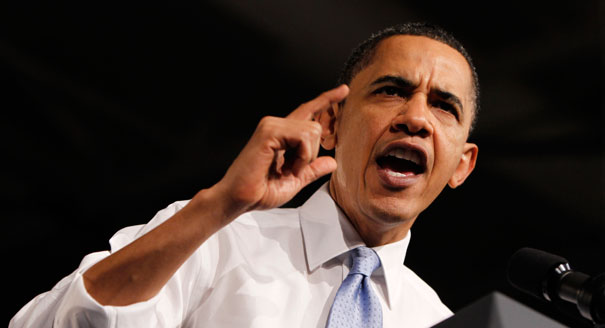In January 2008, then-candidate Barack Obama essentially pledged to shut down the American energy market with new regulations when he said, “If somebody wants to build a coal-powered plant, they can. It’s just that it will bankrupt them.”
Videos By Rare
Two years later his destructive rhetoric continued to flow through the administration’s hallways as federal officials threatened to keep the government’s boot on the neck of oil companies that hadn’t fell in line. And unfortunately, as we learned last week, President Obama fully intends to keep his promise of dismantling the domestic coal industry once and for all.
The Environmental Protection Agency announced new emissions requirements Monday that will dictate (to an extent unimaginable in the early 2000s) how American businesses can operate. The agency’s proposition will force power plants to reduce emissions by an astounding 30 percent in less than two decades.
Most voters see the climate change initiative for what it is — a way for Democrats to appease environmentalist donors, like Tom Steyer, before the midterm elections — but EPA Administrator Gina McCarthy downplayed the draft rule as fair and lenient.
Here are the real facts: the Obama administration is making legislators choose between three options that each equate to throwing our nation’s energy sector into a regulatory minefield. States have a choice in only the most technical of senses. They can use taxpayer money to fund alternative energy sources, most of which are economically unsustainable without government aid; they can use tax credits for energy efficiency programs that compel companies to invest in fluorescent light bulbs instead of in key infrastructure; or they can implement statewide cap and trade systems through which productive companies are taxed for their success.
The EPA wants to have it both ways, appearing as an advocate of freedom while quietly issuing an ultimatum to our nation’s business leaders.
It’s un-American, plain and simple.
The coal industry plays a huge role in our economic well-being. Kentucky and West Virginia receive more than 90 percent of their electricity from coal. Think about how many companies depend on strong and consistent power generation from these plants. With a combined population of over 6.2M people, I imagine there are quite a few. That’s only a single area of the country, too! Other regions, like Arizona and South Carolina, have to cut their emissions by more than 50 percent.
And, while Texas is lower on the EPA’s list percentage-wise, its residents will be bearing the brunt of these new environmental regulations. Power plants in the state will account for one-quarter of total carbon emissions reductions nationwide. Placing such a massive burden on a region that many people consider America’s energy capital is not only irrational but fundamentally unconstitutional.
The agency estimates that utility companies will need to spend about $8.8B per year in order to comply with the regulations, a hefty shake-down as it is. But calculations from the U.S. Chamber of Commerce suggest a much higher number with the effects of the new rule costing the nation as much as $50B annually. How can the EPA justify these economic intrusions at a time when the energy sector is already voluntarily streamlining its production chains? After all, total carbon emissions in the United States have dropped somewhere between 10 percent and 15 percent within the past ten years because American companies embraced the free market.
Lower emissions, which energy executives track without the EPA nagging them, are a signal that coal resources are being used in the most efficient way possible, and what better incentive exists in the free market than serving customers and making money while doing so?
At the end of the day, we have two choices. We can #ActOnClimate with new regulations, as the Obama administration has been hoping from the get-go, or we can make America shine through tax relief for our energy industry, through optimistic rhetoric that praises (and not vilifies) the free market, and through policy standards that hold our leaders accountable before agencies like the EPA place the straw that breaks the camel’s back.
What began as Richard Nixon’s executive order has turned into a behemoth of bureaucrats and crony capitalists. It’s time that Washington protect the individual — consumers and producers alike — in order to secure our nation’s energy independence, now and in the future.

